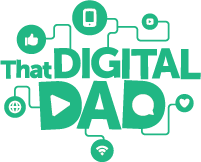A Federal Trade Commission investigation into YouTube has the potential to inspire changes in how the platform operates — and that could be good news for parents.
We can’t seem to get through a news cycle lately without hearing about one of the big tech companies — and over the last few weeks, YouTube has had its fair share of press. The Washington Post recently broke the story that the Federal Trade Commission is investigating YouTube over allegations that they violate children’s privacy. This is pretty significant news given that YouTube is the number one platform for children between 6 and 12. And yes, that’s the adult version of the platform — YouTube Kids comes in way down the list at number 45.
At the risk of stating the obvious, the difference between YouTube Kids and YouTube is that one is explicitly designed for and targeted at kids, and the other is a platform for ages 13 and up — or so YouTube claims in their Terms of Use. It is safe to say there are more kids on YouTube than on YouTube Kids, but YouTube’s claim that the platform is only for ages 13+ has essentially allowed the adult site to skirt the Child Online Privacy Protection Act (COPPA). The legislation has been in place in the United States since April of 2000, and it sets some strict rules for websites and apps that are targeted for kids, especially when they are collecting personal data — and companies can face some pretty hefty fines if they violate it.
As I’ve written before, COPPA compliance sets a high bar — as it should when tech companies are creating products for kids. Unfortunately though, it’s all too easy for companies to operate in a grey area by simply claiming they’re “not for kids.” And that’s why the FTC investigation into YouTube is so important: depending on the outcome, we could see a major tech company called on their doublespeak.
Fun for all ages?
The heart of the issue is whether or not YouTube is, in fact, a platform targeted at children. And a simple scan of YouTube’s most popular videos and channels makes a strong case that it appeals to kids. There are countless hours of unboxing videos, sing-alongs, cartoons and gameplay. I’d guess that there aren’t very many adults out there watching ChuChuTV Nursery Rhymes, Ryan ToysReview or Cocomelon for their own enjoyment — and Cocomelon alone has more than 51 million subscribers.
These are lucrative channels for YouTube as well. Ryan ToysReview brought in an estimated $11,000,000 USD in ad revenue in 2017, and that poses a problem for YouTube. The kids content is clearly profitable, but they can’t acknowledging that kids are using the platform, lest they be caught up in COPPA. But, according to the Washington Post, the fact that this age group is active on YouTube is something of an “open secret” in the tech industry.
As it turns out, a lot of consumer and privacy advocates weren’t buying the claim that YouTube isn’t a kids platform, and after several formal complaints, the FTC opened an investigation. Since the adult site tracks personal data and uses advertising algorithms as if it’s not a platform for kids, the FTC’s conclusions could have major implications for the platform.
Not surprisingly, it appears that executives at YouTube are mulling over some major changes as a result of the investigation. In another article, the Washington Post reported that the company is considering changes to its algorithm, while the Wall Street Journal reported that the platform was considering moving all its kids content to YouTube Kids. A company spokesperson emphasized, however, that the YouTube considers lots of ideas to improve the platform — and most just stay ideas.
But before I dive into further speculation of potential changes as YouTube, I think we should take a closer look at how real families — including kids — are using the platform. YouTube provides endless hours of entertainment — and virtually every parent I’ve ever met uses it with their kids. Take a look around you any time you’re at a restaurant or airport and you can see in plain sight how popular it is. This tells me that parents still see more positives than negatives in YouTube, despite the risks of inappropriate content, data tracking and advertising algorithms. Essentially, parents have told YouTube that they’ll put up with a kids content platform based on an advertising business model — but man oh man, I’m sure we’d all love it to be safer. I think this point is extremely important for YouTube as it ponders its next move.
Prediction 1: All kids content (and kids ads) will move to YouTube Kids
Both YouTube and YouTube Kids use an AVOD model (advertising video on demand), meaning users can stream videos for free in exchange for watching ads along the way. Users also have the option to subscribe to YouTube Premium, which is an SVOD model (subscription video on demand). Included in your monthly subscription fee, you get ad-free access to all YouTube content. My prediction for the company’s next move? I think YouTube will expand and revamp YouTube Kids.
Currently, this standalone platform has a distinctly pre-kindergarten feel to it. It appeals most to kids under five years old, but I think YouTube will try and use it to capture kids content for ages under 13 as well. This could have major implications for ad revenue, because there are a lot of advertising dollars spent on the kid-focused channels within the adult platform. If YouTube shifts all its kids content to the kids platform, those ads will likely move too.
YouTube Kids will continue to run ads, but there will be a shift away from ad placements being purely algorithmically-driven, because that requires extensive data capture — something COPPA frowns upon. That means advertisers who still want to reach kids may have to forgo the more targeted algorithm-based method, and will likely increase or decrease budgets for more or less exposure. There will continue to be no commenting allowed under videos, and we’ll see manipulative features like auto-playing the next recommended video removed from the kids version.
YouTube Kids will likely face other hurdles related to advertising, because Apple has recently made significant changes to its development guidelines. They now restrict third-party advertising on kids apps — which will be an interesting problem for YouTube Kids to solve in the context of its iOS app. Though YouTube is primarily a browser based platform, this could still prove to be challenging for their kids app.
Prediction 2: Vetting kids content contributors
Content curation on YouTube has always been an interesting challenge for the company. Because there are over 400 hours of video uploaded to YouTube every minute, humans will never be able to curate everything that comes through — hence the platform’s reliance on artificial intelligence (AI) for such tasks. For the new YouTube Kids model, I think we’ll continue to see reliance on AI to filter content, but I wouldn’t be surprised if they adopt a model where content creators have to be pre-approved. Honestly, they should be doing this already, because we’d expect a large number of creators on YouTube Kids to be under 13 years old — and parental oversight is necessary in those situations anyways.
Prediction 3: FTC will fine YouTube, but it won’t be enough
Much like Facebook did earlier this year, I think YouTube’s parent company Alphabet (you might know them as Google) will end up reducing earnings and setting aside some money to pay a fine from the FTC. In Facebook’s case back in Q1, they earmarked $3 billion. How much could YouTube conceivably be on the hook for?
My quick napkin math looks something like this: there are about 192 million monthly active users on YouTube in the US. If usage by age is proportionate to the age breakdown of the US population, we can roughly estimate about 15% of YouTube’s monthly active user base is under 13 — which would be about 28.8 million kids. When companies violate COPPA, the FTC is supposed to fine them $16,000 per affected child. So that would put the fine somewhere around $460.8 billion. I think we can all agree that’s not likely to happen.
I do think the impending fine will dwarf the $5.7 million penalty handed down to TikTok for similar violations. My guess is that YouTube’s fine will be in the $3–5 billion range. While this sounds like a big number, remember this: it’s only about three-to-five weeks of operating cash for the company — and realistically not enough on its own to deter them.
If anything is going to spur change, it won’t be fines alone. It’ll be the mounting pressure from the public and the FTC. Eventually the advertisers that target kids on YouTube will come under the same pressure, and YouTube will need to react. And because it’s a wildly successful platform, I think there is immense incentive for them to make these changes. The under-13 age group represents too large a user group for them to ignore under increasing pressure from the FTC.
Kidtech is one of the most challenging spaces in the tech industry. A large part of that is because it’s tough to find a business model that works on top of a platform — this is something Bjorn Jeffery articulates well in a three-part series on his website. That said, I don’t believe the platform will have to make seismic changes to the product or business model for YouTube Kids to thrive. And I anticipate that we’ll see some of these changes in the next 12 months.
The fact is that tons of kids are using YouTube every day, and until now, YouTube has been able to avoid the COPPA rules by claiming they’re an adult platform. This has earned them a lot of money, and exposed kids to a lot of unnecessary risks. So, if the FTC investigation prompts changes that make the platform safer for kids, I’m all for it!
– Sean, @thatdigitaldad






